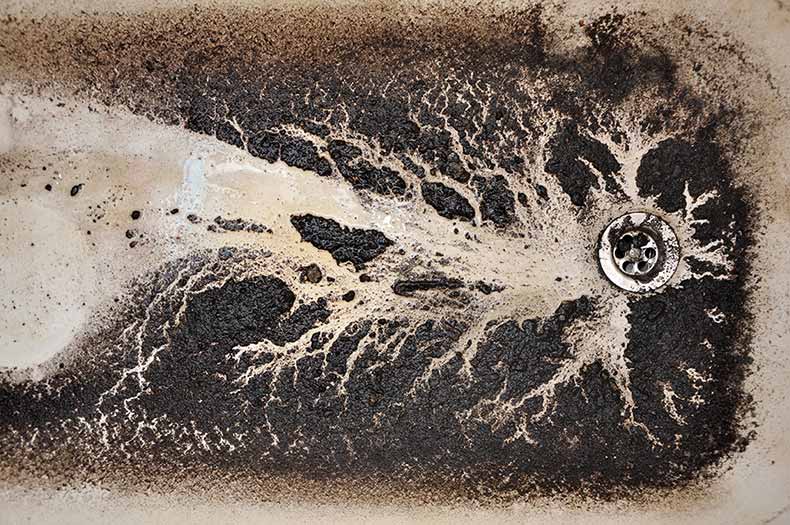What are your ideas concerning What to Do if Sewage Starts Coming Up Through Your Bathtub?

Sewer backup in the tub can be a stressful and unhygienic issue for any type of house owner. Not only is it inconvenient, but it likewise positions severe health and wellness threats and shows underlying issues with the plumbing system. Recognizing why sewage is turning up via the bath tub is important for taking appropriate activity to address the problem properly.
Intro to the Concern
Usual Reasons for Sewer Backup
Obstructions in the Sewer Line
Among one of the most usual reasons for sewer backup is an obstruction in the sewer line. This can happen due to the accumulation of debris, oil, or international things in the pipes, preventing proper flow and causing sewer to back up right into your bath tub.
Tree Origin Invasion
Tree roots seeking moisture and nutrients can penetrate sewage system lines via small cracks or joints. In time, these roots can grow and increase, creating considerable damages to the pipelines and leading to sewage back-up concerns.
Comprehending the Issue
When sewage draws back up right into the tub, it's a clear sign of an issue with the drain system. The wastewater that should be moving away from your home is instead discovering its back into your living space, which can result in considerable damages and carcinogen.
Potential Causes
Numerous factors can add to sewage backup in the bath tub. From obstructions in the drain line to concerns with the plumbing infrastructure, determining the root cause is necessary for discovering a service.
Aging Facilities
Older homes may have outdated plumbing systems that are more prone to deterioration, cracks, and wear and tear. As pipes age, they come to be much more vulnerable to leakages and obstructions, increasing the probability of sewer back-up events.
Heavy Rainfall or Flooding
Throughout periods of heavy rainfall or flooding, the drain system may become overwhelmed with excess water, creating back-ups and overflows. This can result in sewage supporting into tubs and other fixtures inside the home.
Indicators of Sewage Backup
Foul Odors
Unpleasant odors originating from drains pipes or fixtures, particularly in the washroom, may show sewage back-up problems. These smells are often solid and consistent, indicating a trouble that needs prompt interest.
Slow Draining Fixtures
Bath tubs, sinks, and toilets that drain pipes slowly or not in any way could be experiencing sewer back-up. If numerous fixtures are impacted at the same time, it's most likely that the concern stems from a typical factor, such as the major sewer line.
Gurgling Sounds
Unusual gurgling or bubbling sounds coming from drains when water is running elsewhere in your home are a measure of air trapped in the plumbing system. This air build-up can arise from sewage back-up and need to be checked out promptly.
Wellness Dangers Connected With Sewage Back-up
Contamination of Supply Of Water
Sewer back-up can pollute the water in your house, presenting a significant wellness danger to you and your family. Direct exposure to infected water can lead to gastrointestinal issues, skin infections, and various other health problems.
Mold Growth
Moisture from sewer backup can produce suitable conditions for mold and mildew development in your home. Mold and mildew spores can aggravate breathing problems and create allergies in sensitive people, making timely cleaning important.
Spread of Illness
Sewage has unsafe bacteria, infections, and parasites that can trigger a variety of conditions, consisting of hepatitis, cholera, and gastroenteritis. Entering contact with sewer or infected surface areas puts you in jeopardy of infection.
Cleaning Up After Sewage Back-up
Disinfection Procedures
Thoroughly disinfect and disinfect impacted locations after sewage back-up to eliminate damaging bacteria and prevent mold and mildew development. Use suitable cleansing items and protective gear to make sure secure and effective cleaning.
Repair of Affected Locations
Fix any type of damages to floor covering, walls, or fixtures triggered by sewage back-up. Depending upon the extent of the damages, you may need to change carpets, drywall, or other materials to recover your home to its pre-loss problem.
Immediate Actions to Take
Switching Off Supply Of Water
In case of sewage backup, it's vital to shut off the supply of water to avoid additional contamination and damage. Locate the main water shutoff valve in your home and closed it off until the issue can be fixed.
Calling an Expert Plumber
Managing sewer backup is not a DIY task. Call a licensed plumber with experience in handling sewage-related issues to assess the scenario and carry out needed repair work or cleanups.
Preventing Contact with Contaminated Water
Till the sewer backup is fixed, stay clear of contact with contaminated water to prevent the spread of bacteria and microorganisms. Put on protective equipment if you need to be in the affected area and clean your hands completely later.
Safety nets
Normal Maintenance of Sewer Lines
Arrange routine evaluations and upkeep of your sewer lines to identify and address potential problems before they escalate into significant issues. This can include cleaning out debris, examining for tree origin invasion, and repairing any damaged pipes.
Mounting Backwater Shutoffs
Think about installing bayou shutoffs in your plumbing system to prevent sewage from receding into your home during durations of heavy rainfall or flooding. These valves instantly close when water draws back up, securing your residential or commercial property from contamination.
Proper Disposal of Household Waste
Stay clear of flushing anything other than toilet paper and human waste down the bathroom to avoid blockages and obstructions in the drain line. Dispose of grease, oil, and other household chemicals properly to decrease the risk of plumbing troubles.
Why Is Water Backing Up in My Bathtub When I Flush My Toilet?
What to do about a sewer line clog
First, don’t bother with plunging. No amount of plunging will dislodge the clog in a sewer line. The clog is too far away. Plungers are for clogs in the toilet itself, not the sewer line. Plus, the most likely causes of a sewer clog are:
Tree roots Flushed toys or feminine products Grease buildup Those items don’t move easily. And in the case of tree roots, the roots need to be cut out of the pipe and the pipe will need to be repaired.
You’ll need a closet auger. A closet auger is a type of plumber’s snake with a protective cover to keep from scratching the delicate porcelain toilet. If the clog is further down, you may need to remove the toilet or use one of your cleanouts to get to the clog.
We also recommend doing a video inspection of the drain to ensure that the cause of the clog has been completely removed. Otherwise, you could have the same problem again in a few days or weeks.
https://mspplumbingheatingair.com/blog/why-is-water-backing-up-in-my-bathtub-when-i-flush-my-toilet

Hopefully you enjoyed our piece about Why is There Sewage Coming Up Through the Bathtub. Thank you for taking a few minutes to read our article. Those who enjoyed reading our blog entry kindly be sure to share it. Thanks for taking the time to read it.
Click For More Information